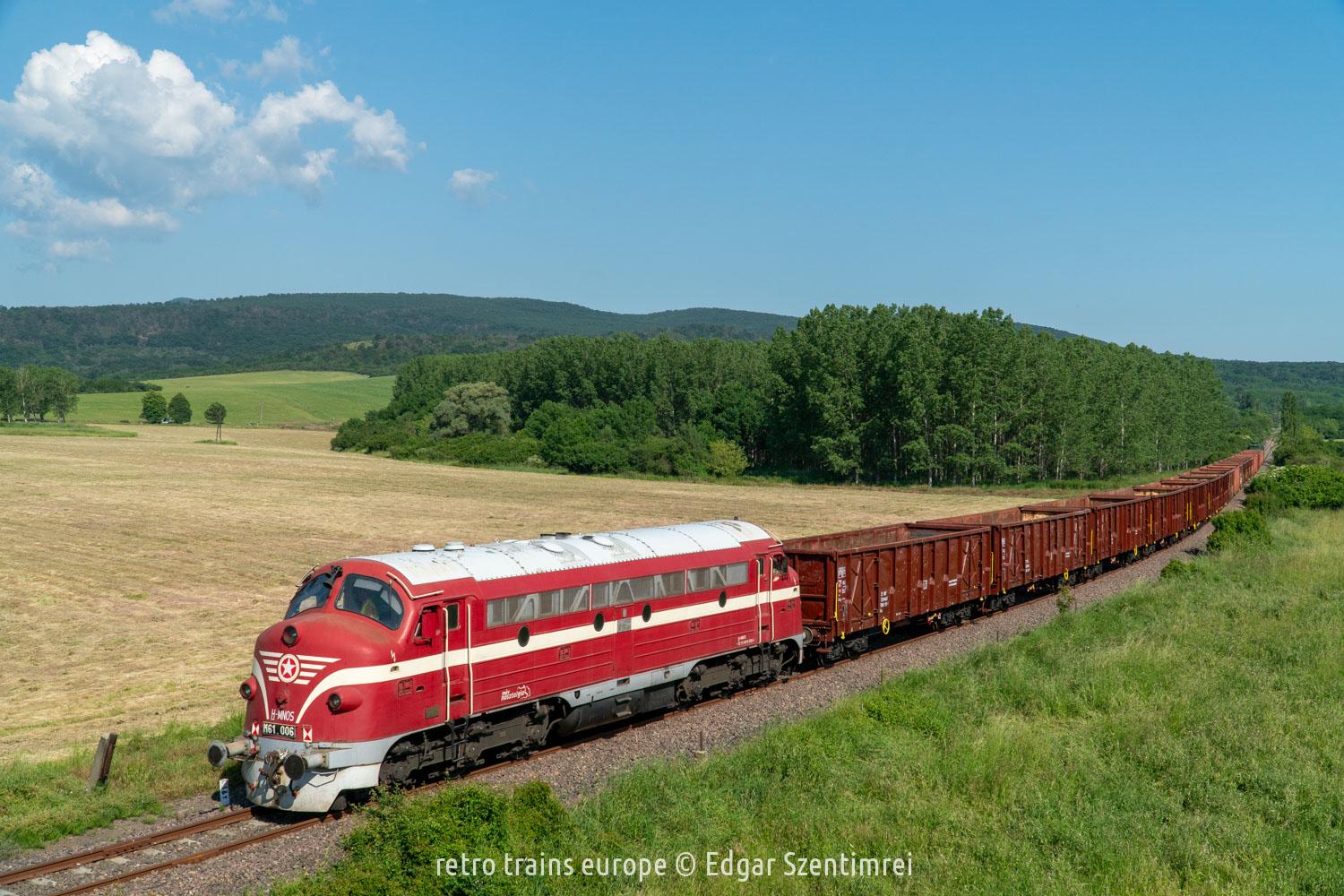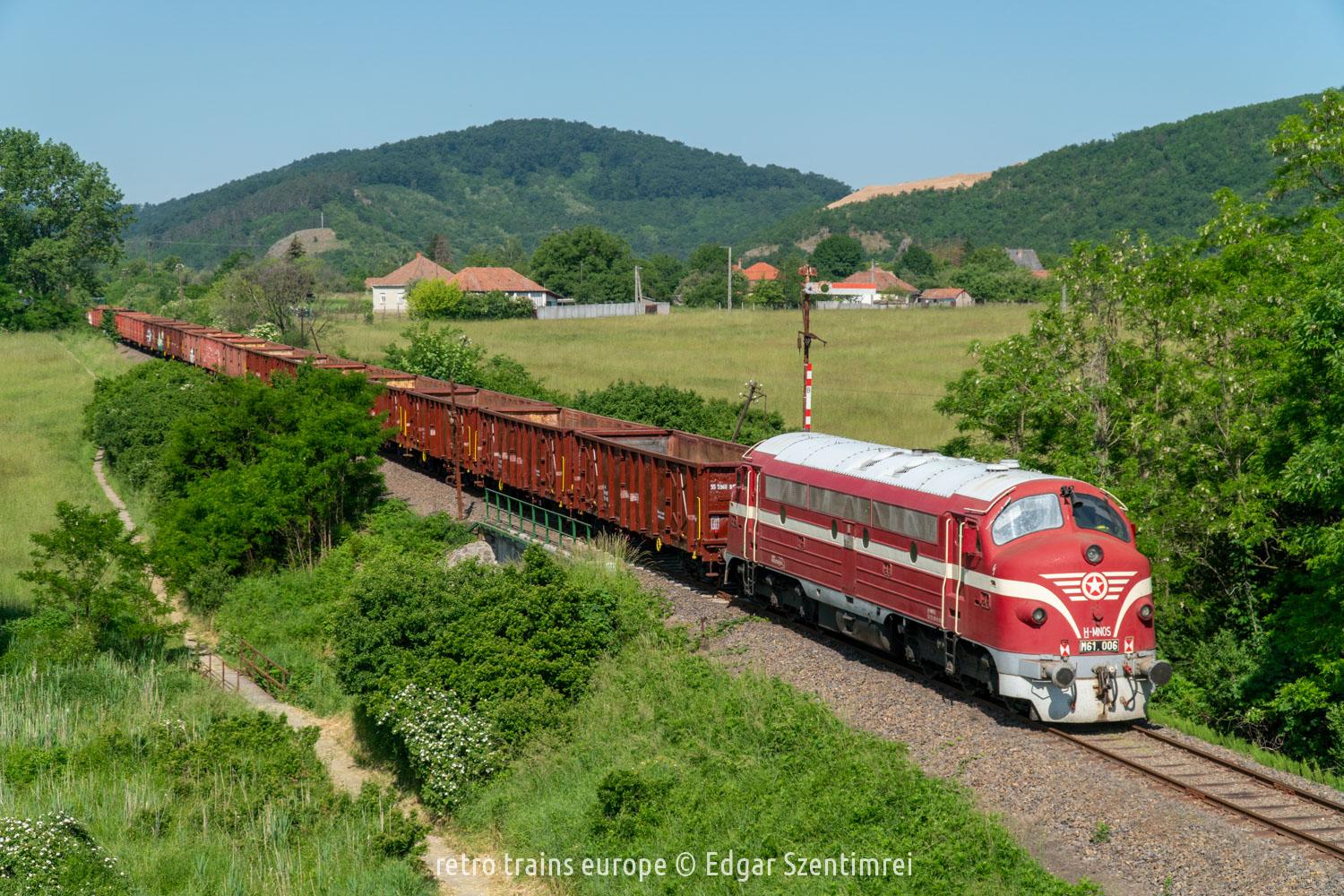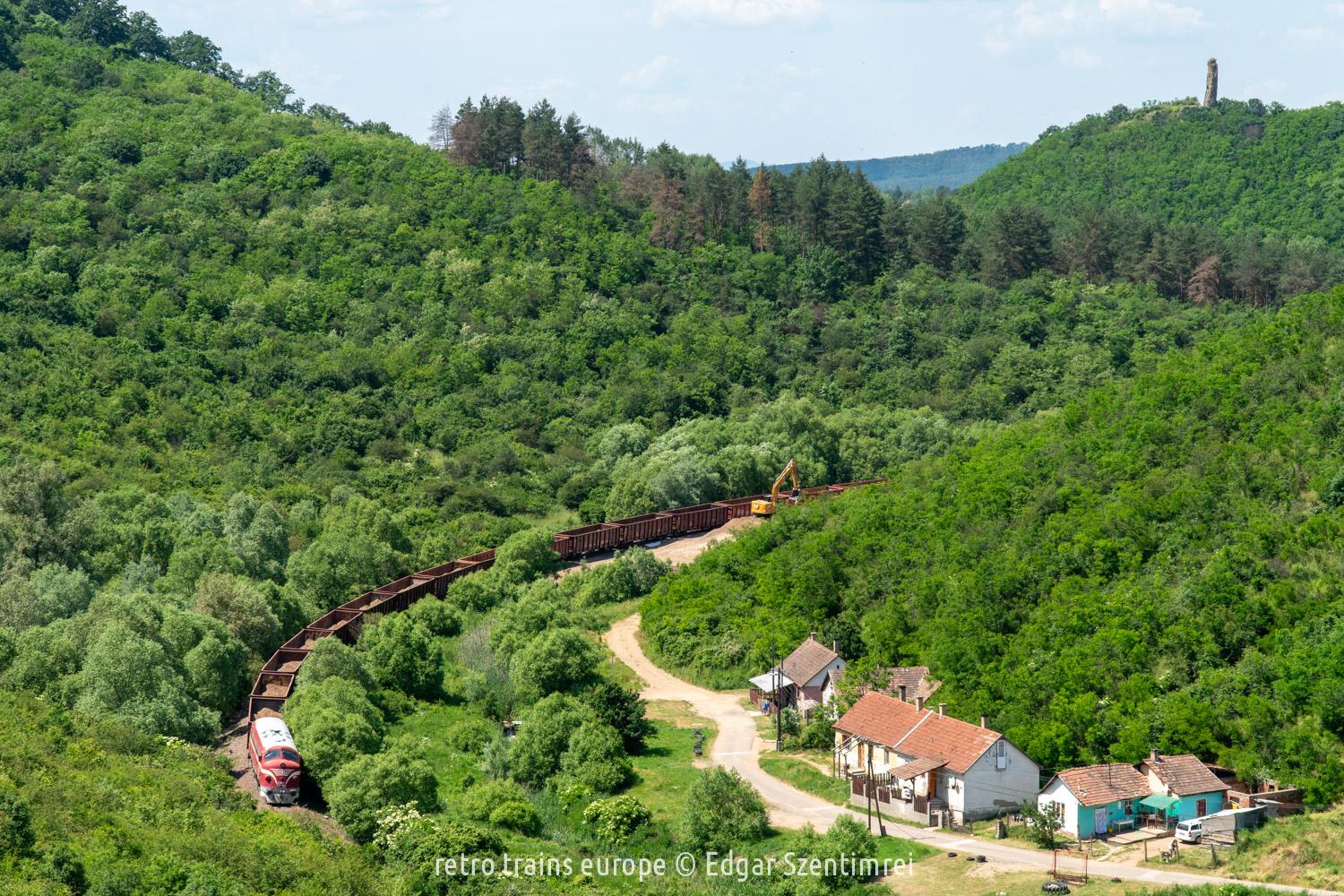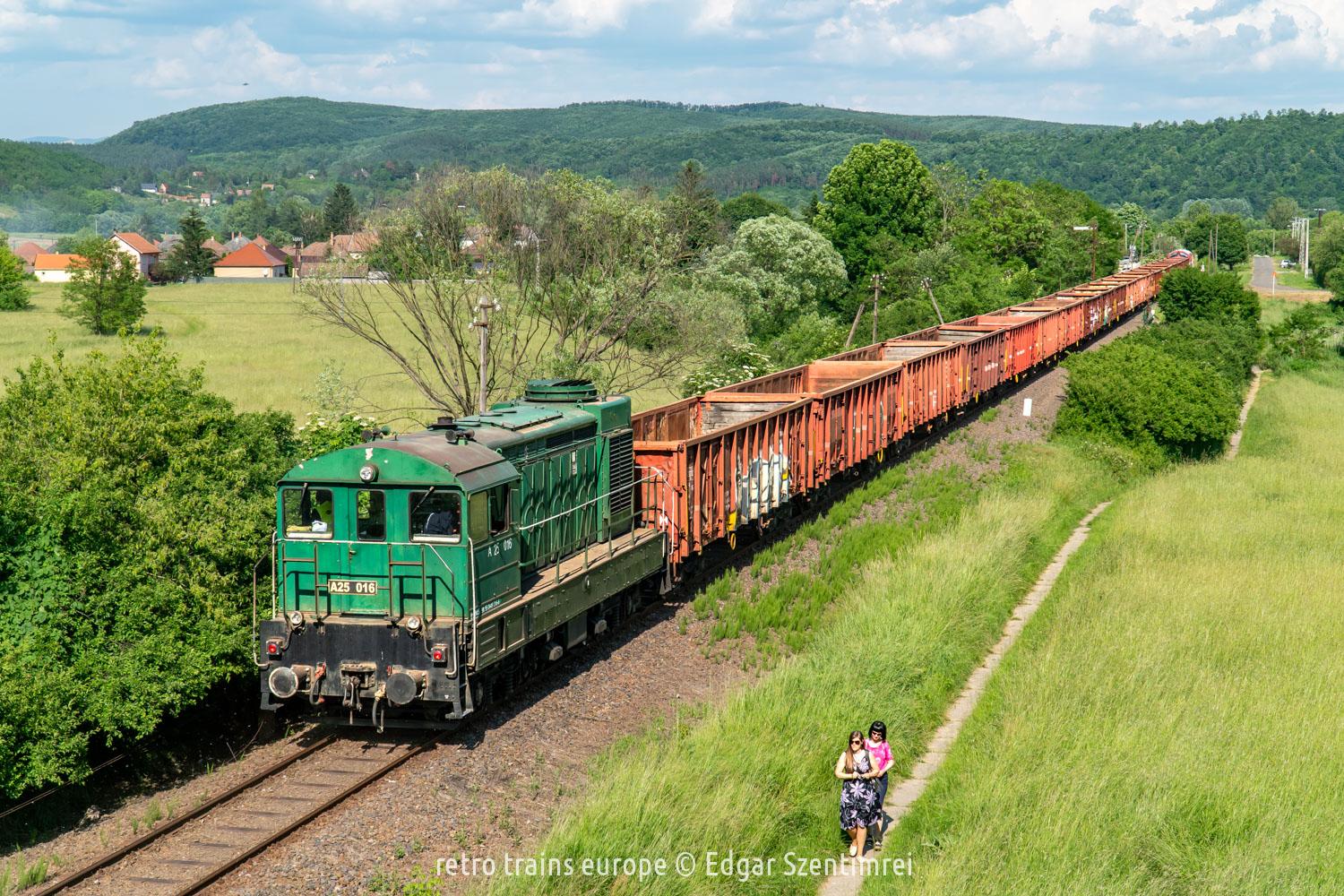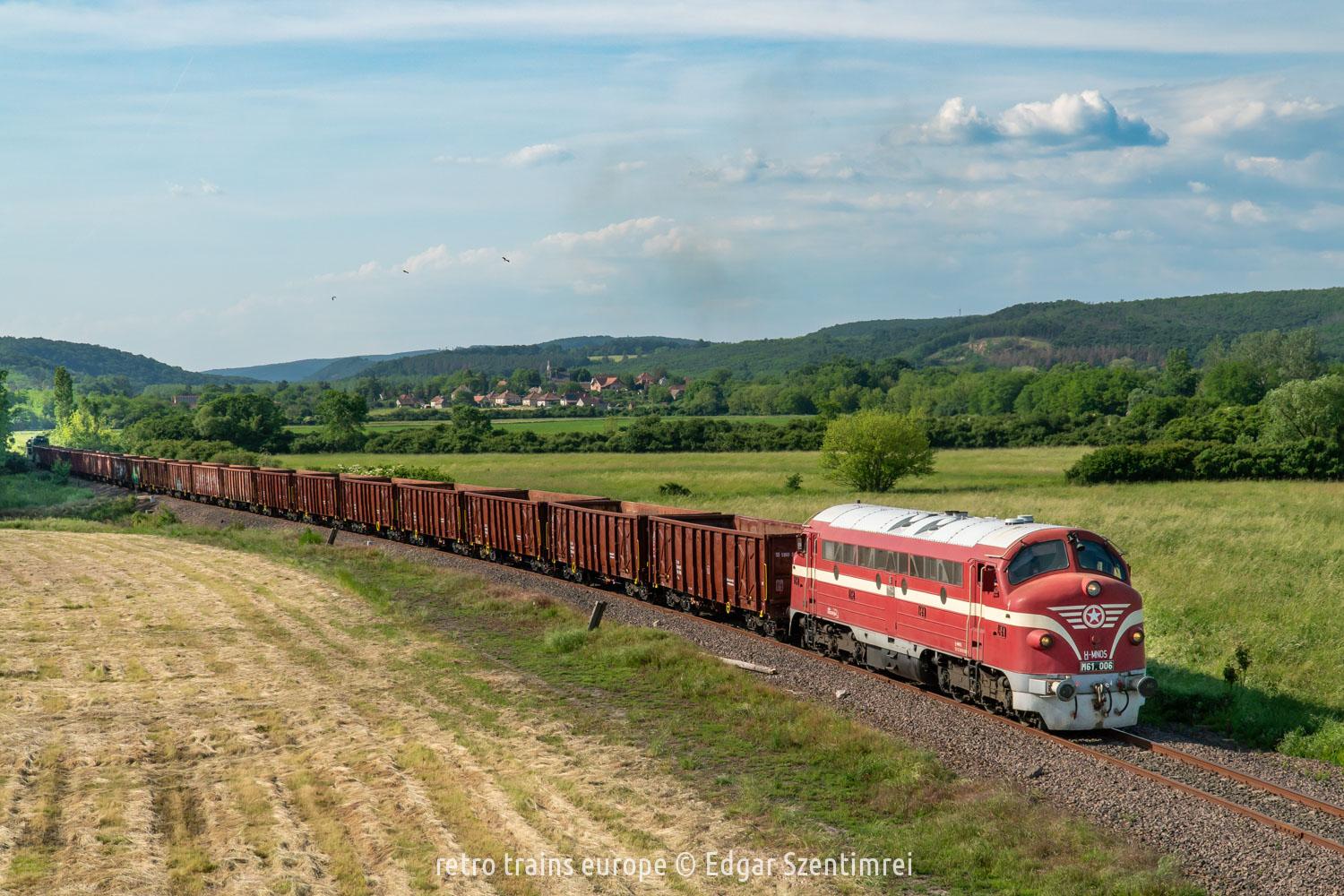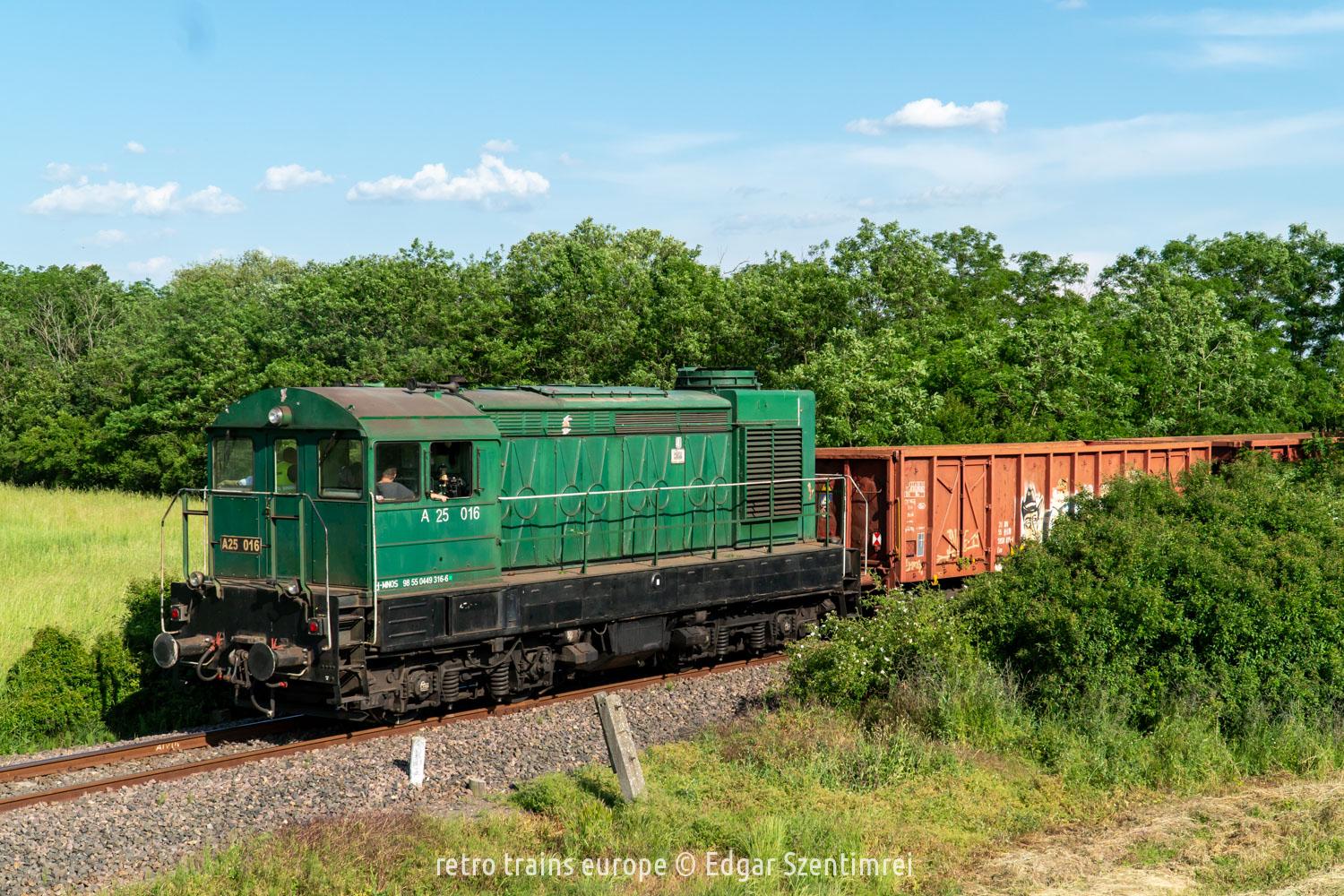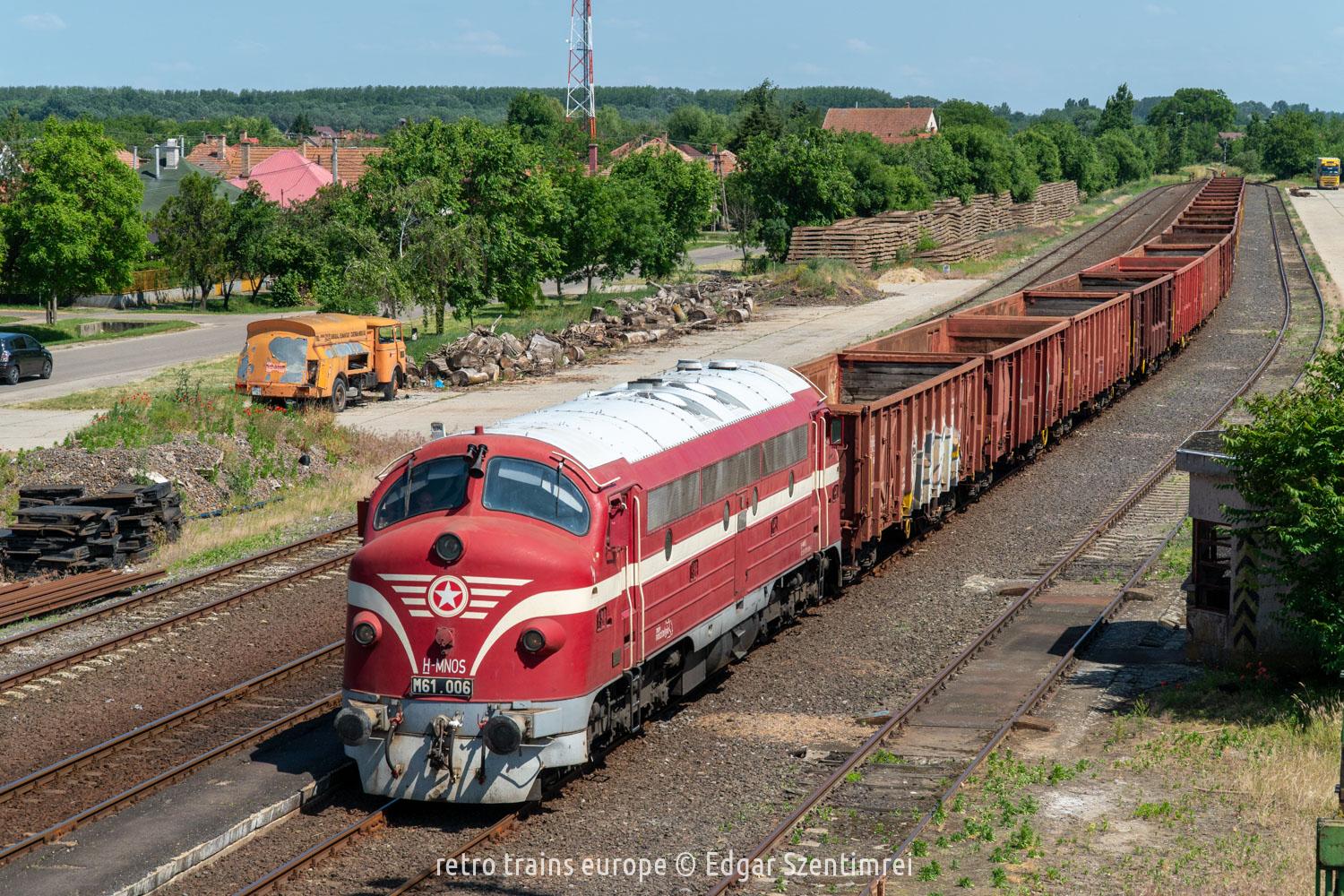In the mountainous region, coal, stone, and timber were provided to the people living in the plains, while the plains supplied food to those living in the mountains. The railway played a key role in transporting goods between these two areas. Although traffic on the Kisterenye - Kál-Kápolna railway line has significantly decreased in recent decades, it is still capable of fulfilling this essential role whenever needed. The railway has always played an important role in stone transportation, as the parallel road largely passes through villages that are increasingly unwilling to tolerate truck traffic. In the vicinity of Recsk, a third stone quarry was opened alongside the existing two, from which a considerable amount of stone was transported for the construction of factories in Debrecen. The trains were operated by MÁV Rail Tours, which showcased its rare and special locomotives for the task.
The station is full – At the mainline Kál-Kápolna station, self-unloading wagons like the ones in the picture have previously been used to transport stone, but until now, trucks have been transporting it from the Kisnána quarry. The new quarry now brings in multiple times the amount of stone, which neither the road nor the truck carriers could handle, not to mention the residents of the villages along the route. The transportation takes place on the non-electrified branch line between Kál-Kápolna and the Recsk loading area, and the company provided two special locomotives from day one. The A25 016, also known as "Tall Bobó" or "Bogey," is a DVM7 type locomotive manufactured by Ganz-MÁVAG in 1961 in Budapest, and it is the only one of its kind in Hungary. (Kál-Kápolna / Hungary, 2 June 2023, 7:47 CET)
The empty train is pushed by a Nohab - The other locomotive of the freight train is a Nohab. There are five level crossings on the line that are operated by the train crew. If a train is longer than 150 meters, there must be a locomotive at both ends of the train so that the crew of the rear locomotive can raise the crossing barriers after the train has passed. Having two locomotives is also beneficial because the loading takes place on the open track, and it is easier to turn back with both locomotives. (Kál-Kápolna / Hungary, 2 June 2023, 8:02 CET)
Vagabond of the Hungarian branch lines -- If nothing else, the black lettering of the company name 'H-START' makes railcar 117,202 special. It belongs to the Miskolc depot, while working in regional service to Kisköre and Kisújszállás. -- Kál-Kápolna (hu), 2 June 2023, 8:12 CET
Going for stone -- Today is a very important day in the history of the railway line. Apart from a few days of trial loading in October 2021, the last regular stone shipments were carried out in 2010. Since then, only the weekly timber cargo have left Recsk, and for a long time, even those were stopped, so many people have completely forgotten the line. -- Tarnaszentmária (hu), 2 June 2023, 8:45 CET
Approaching the quarry - The mechanical signal belongs to the Recsk-Parádfürdő station, where a station master only works when shunting is taking place. However, at the moment, trains are just passing through the station to the nearby open track loading area, so no one has set the signal to "clear." In the background, the yellow scar on the landscape is the stone quarry, where the stone is directly loaded into the train. (Recsk, 2 June 2023, 9:20 CET)
There’s a lot to see from here, perhaps too much – A short walk along the tracks, then a narrow path up to the lookout, and we’re already in a place where you can linger and take in the view for a long time. The main focus is the train and the loading, which is done by a single excavator, making the process incredibly time-consuming. In the two and a half hours since arrival, only half of the wagons have been loaded. In the valley below, there are houses of poor Romani people, who may be at risk of being driven out by the quarry that has opened up above them. In the distance, the ruins of Kanázs Castle stand tall and hard, like a large, upright cock. (Recsk / Hungary, 2 June 2023, 13:40 CET)
The Ladies don't even know how lucky they are -- Just look at the rusty iron sleepers and the thin rails; this line was not built for such heavy trains. The initial southern section of the railway line was upgraded due to previous large stone shipments, extending to the nearby stone loading station, but beyond that, no one expected heavier trains. Up to six to eight wagons for loading timber are brought up to Recsk-Parádfürdő station, but today marks the first time in decades (or perhaps the first time ever) that a 20-wagon train has passed through here. -- Recsk (hu), 2 June 2023, 16:05 CET
Away from the Villages -- The Tarna Valley is relatively densely populated, with houses stretching along the road. However, the railway runs farther from the villages, on the other side of the Tarna stream. If these twenty wagons of stone were brought down by truck, the people living along the main road would definitely notice. Here, it’s only the grasshoppers that might be disturbed by a slightly larger resonance. -- Tarnaszentmária (hu), 2 June 2023, 16:41 CET
Broad Gauge Brutality -- It's not a classic setup, but this photo focuses on the locomotive herself. This unit was always working in Hungary, but originally, the Ganz-MÁVAG designed the Class DVM7-1 locomotives for the Soviet Railways where everything is bigger. Their Soviet Class was ВМЭ1 (венгерский маневровый с электропередачей, 1-й тип), which translates to 'Hungarian shunting locomotive with electric transmission, 1st type'. The Soviet godfathers basically hit all the key stuff. -- Tarnaszentmária (hu), 2 June 2023, 16:42 CET
Retro diesel in the Puszta – The direct express train from Budapest to Lake Tisza operates on weekends during spring and autumn, while in summer, it runs every day. Last year, there was a significant shortage of mainline diesel locomotives at MÁV-START, so after many chaotic situations, the traction is now provided by MÁV Rail Tours, which regularly uses this M40 locomotive, manufactured by Ganz-MÁVAG in 1967. -- Kompolt, 2 June 2023, 18:42 CET
The empties depart soon -- The wagons loaded the previous day in Recsk were brought by the same locomotive to Balmazújváros, from where the stone was transported by trucks to the factories under construction near Debrecen. The unloading is already complete, and the empty train will depart later in the afternoon back to the starting point on the Recsk line, Kál-Kápolna station. Tomorrow, Sunday, there will be no loading in Recsk, but it will resume on Monday. -- Balmazújváros (hu), 3 June 2023, 14:20 CET
Don't Believe in Miracles! -- There is rarely such heavy traffic at Balmazújváros station, but right now, the track towards Debrecen is closed, and the local trains from Füzesabony are also turning back here. It's a pleasure to see the popular, nearly sixty-year-old 'Púpos' (Humpback) leading the express train to Budapest. If we believed in miracles, this would be one; in reality, it’s a testament to the constant, dedicated work of the maintenance crews. -- Balmazújváros / Hungary, 3 June 2023, 14:40 CET
Goulash, Puszta, Chörgö -- Apologies for the third, lesser-known term. Trust us, it’s also something truly Hungarian: the Ganz-MÁVAG diesel locomotive, which was built by the factory in Budapest for MÁV, as well as for the Greek and Tunisian railways. -- Kungyörgy-major, Hortobágy (hu), 3 June 2023, 15:34 CET
The grey cattle weren't exactly at home -- A Bzmot railcar and a Bzx trailer pass by the Kungyörgy farmstead livestock facility. The Debrecen-Füzesabony line is more commonly served by locomotive-hauled trains, but there are still too many Bzmot railcars that could appear anywhere. -- Kungyörgy-major, Hortobágy (hu), 3 June 2023, 17:35 CET
Overbuilt Junction -- Once, life was bustling at Ohat-Pusztakócs station, but in 2007, traffic ceased on the connecting branch line, and with that, the station in the middle of the Puszta was left without passengers. The station now really only serves a traffic function, with oncoming passenger trains between Debrecen and Füzesabony meeting here every two hours. The freight train to Kál-Kápolna rushes through the station without stopping. -- Ohat-Pusztakócs / Hungary, 3 June 2023, 18:36 CEE
Bathing in the last rays of the sun -- After a short stop in Poroszló, the freight train continues towards Füzesabony, where the locomotive can refuel. They will probably spend the night and Sunday at Kál-Kápolna station, ending the first two-day journey between the Recsk mine and the loading station near Debrecen, a route that will be repeated many times over the summer. To the delight of railway enthusiasts, a second train with the orange Nohab 019 has also been put into service, so there is a freight train every day except Sunday. -- Poroszló (hu), 3 June 2023, 19:21 CET



